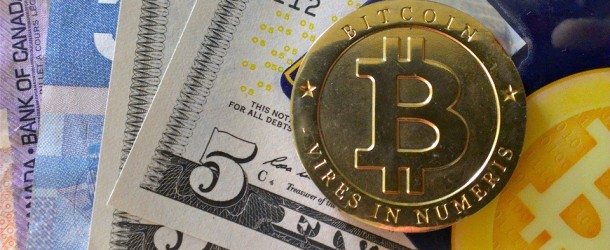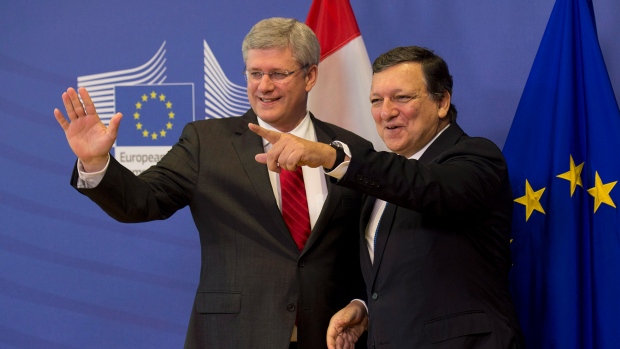Ten years from now, crypto-currencies – encrypted, digital cash – may be the primary way of making and receiving payments. The revolutionary concept became (virtual) reality with the launch of Bitcoin in 2009 (see What is Bitcoin? on Youtube), and has been gaining steam ever since.
Bitcoin’s founders created an open-source, peer-to-peer financial system that operates independently from centralized financial institutions. The units of currency– Bitcoins – get their value primarily from the demand for them, and are transferred between users using computers and smart phones. The coins can be bought, sold, and converted into dollars, Euros, and the British pound.
[captionpix align=”right” theme=”elegant” width=”300″ imgsrc=”http://natoassociation.ca/wp-content/uploads/2013/10/LN-HowBitcoinWorks.png” captiontext=”How Bitcoin works”]
This kind of money is appealing because it provides a single payment system by which users can transact online, peer-to-peer, and in physical stores, without cumbersome banking processes, credit card fees or even bank accounts. To date, Bitcoin has received the most buzz among crypto-currencies largely because of the anonymity its users enjoy in their transactions. However, its most significant competitor may have just arrived.
Developed by the Royal Canadian Mint, MintChip is the first crypto-currency to be initiated by a federal government. Similarly to Bitcoin, the digital cash product allows its users to transfer encrypted forms of monetary value almost instantly. However, unlike Bitcoin, this value is created digitally by the Mint.
MintChip is also distinct in that it uses a silicon chip to hold and securely transfer the value. Users buy these chips from brokers and embed them in their wallets, phones, USB sticks, laptops or tablets. Once embedded, the chips can then be used to send either encrypted request for, or payments of, digitized monetary value.
Of course, in its quest to displace Bitcoin as the future of money, MintChip will have its own challenges. However, with government backing, MintChip is ideally positioned to meet some of the challenges that Bitcoin is currently facing.
For starters, one of the central functions of money is to be a store of value. Consumers and merchants alike do not want the value of their money to change drastically over short spans of time, because this makes their purchasing power uncertain. Bitcoin, however, has been subject to wild fluctuations in its value this year. Its free market structure allows for speculating investors to impact the price of Bitcoin units, which in turn means that, as Economist Justin Wolfers points out, the purchasing power of the coins can change tremendously between the time someone spends, say, five coins, and someone else spends those five coins. In contrast, because MintChip is federally regulated, the likelihood of extreme currency fluctuation is much lower.
Some analysts suggest that the value of Bitcoins value will eventually stabilize, but it is unclear how. In fact, Matt Yglesias gives a compelling argument that Bitcoins’ price (or value) will fluctuate indefinitely. Given the currency’s fixed supply, the price of the currency will increase as more people choose to use Bitcoins. This steady rise in value is likely to discourage users from actually spending them. However, as the hoarding continues, the Bitcoin network will become much less valuable. At that point, the price of the currency is likely to fall. When users renew their demand for Bitcoins, this cycle will repeat itself. MintChip is better equipped to mitigate this cycle because governments can change the supply of currency to meet any rising demand for it.
Finally, Bitcoin faces the same challenge that faces all innovators: behaviour change. Bitcoin has unquestionably made progress, with kiosks set to open in Canada and recognition as a financial instrument in Germany. Still, four years after its launch, many people still view Bitcoin as a fledgling experiment. MintChip has a distinct advantage in this respect in that it is attached to something the public is familiar with, namely, the Canadian dollar. This peg is likely to increase the legitimacy of the project and attract early users.
Bitcoin’s advocates have, for the most part, responded to the challenge presented by MintChip, by suggesting that it is not a digital currency in the same way that Bitcoin is. Crypto-currencies originated with a certain libertarian flare, emphasizing independence from centralized currencies, central banks and governments. Bitcoin is therefore distinct from MintChip, given the latter’s explicit dependence on government.
For the moment, it is impossible to say whether or not MintChip will trump Bitcoin in their quest to reinvent currency. Regardless, MintChip’s debut is significant in that is has created a more competitive marketplace. In this light, MintChip has already made its mark on the future of financial transactions.




